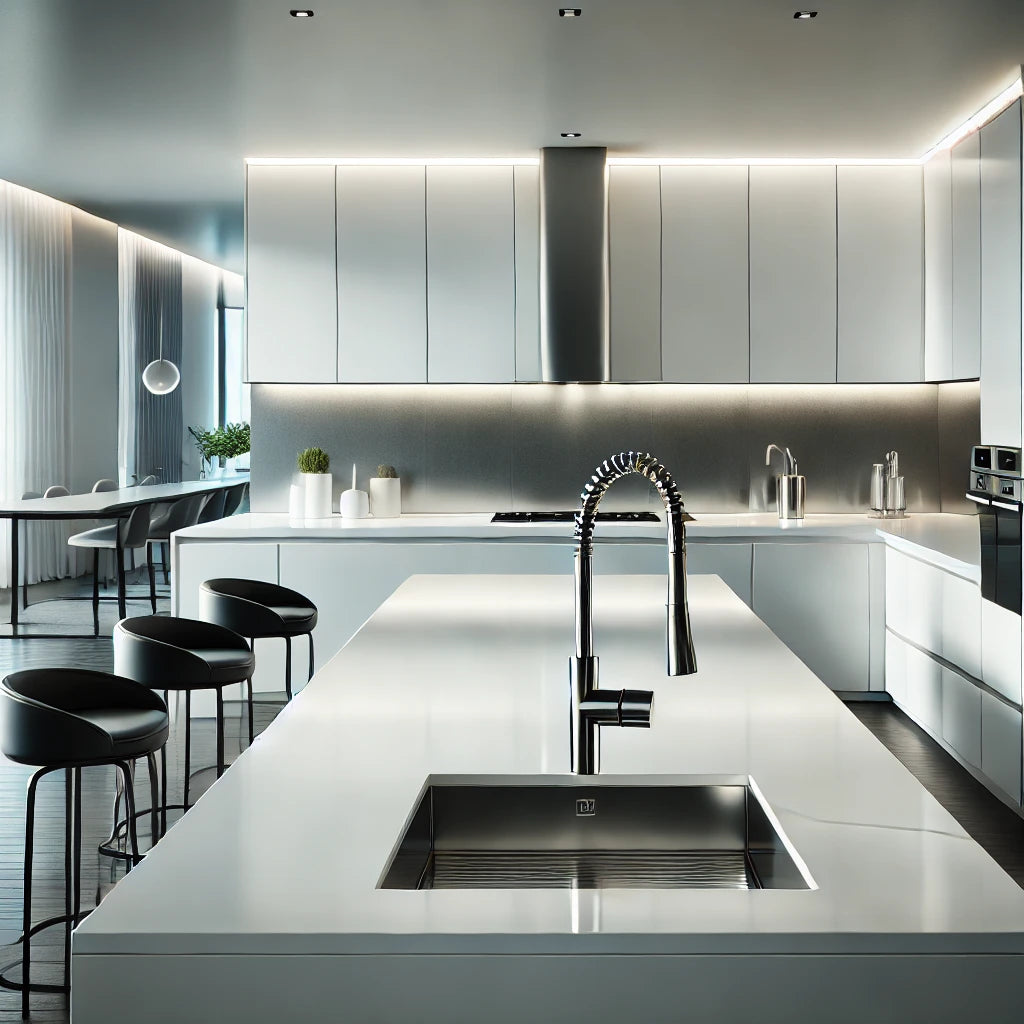
Ultimate Buying Guide for Kitchen Faucets
Share
When remodeling or upgrading your kitchen, selecting the right kitchen faucet is a crucial decision that affects both the functionality and style of your space. Whether you're looking for a kitchen sink faucet or a kitchen faucet with sprayer, this guide will help you navigate through the essential features and options available, ensuring you make an informed decision.
1. Types of Kitchen Faucets
- Single-Handle Faucets: These faucets are popular for their sleek design and ease of use. A single lever controls both water temperature and flow, making them convenient and space-saving.
- Double-Handle Faucets: With separate handles for hot and cold water, these faucets offer precise control over temperature. They are a classic choice and often come in more traditional designs.
- Pull-Down Faucets: A favorite in modern kitchens, these faucets have a spray head that pulls down into the sink, making it easy to rinse dishes and wash produce. They are ideal for deep sinks.
- Pull-Out Faucets: Similar to pull-down faucets, pull-out faucets have a detachable spray head that can be pulled out toward you, offering more flexibility and reach.
- Commercial-Style Faucets: These are designed to mimic the high-arc faucets found in professional kitchens. They often come with a powerful spray head and a flexible hose, ideal for heavy-duty tasks.
- Touchless Faucets: Equipped with motion sensors, touchless faucets allow you to turn on the water with a wave of your hand—perfect for maintaining hygiene and reducing water waste.
2. Key Features to Consider
- Material: Look for faucets made of durable materials like stainless steel or brass, which resist corrosion and tarnishing. Ensure that the finish—whether chrome, brushed nickel, or matte black—complements your kitchen décor.
- Spout Height and Reach: Choose a spout height and reach that matches your sink size and kitchen needs. High-arc spouts are great for filling large pots, while lower spouts are more compact and suitable for small sinks.
- Sprayer Options: A kitchen faucet with sprayer is essential for tasks like rinsing vegetables or cleaning the sink. Consider whether you prefer a built-in sprayer (pull-down or pull-out) or a side sprayer, which is separate from the faucet.
- Mounting Style: Faucets can be deck-mounted (attached to the countertop or sink) or wall-mounted. Deck-mounted faucets are more common and easier to install, while wall-mounted faucets free up counter space.
- Valve Type: Faucets typically use ceramic disc valves, compression valves, or ball valves. Ceramic disc valves are the most durable and require the least maintenance.
3. Installation Considerations
- Number of Holes: Ensure your sink or countertop has the correct number of holes for the faucet you choose. Some faucets require just one hole, while others may need up to three or four for additional features like a sprayer or soap dispenser.
- Water Efficiency: Check for faucets with a WaterSense label, which indicates they meet EPA standards for water efficiency without sacrificing performance. This is especially important if you live in an area with water restrictions.
- Budget: Kitchen faucets come in a wide price range. Set a budget that allows you to get a high-quality faucet with the features you need without overspending.
4. Popular Styles and Finishes
- Modern: Sleek lines, minimalistic design, and high-arc spouts. Popular finishes include matte black and brushed nickel.
- Traditional: Ornate designs with detailed handles, often in finishes like oil-rubbed bronze or polished chrome.
- Transitional: A blend of modern and traditional elements, offering flexibility in design choices.
5. Maintenance and Care Tips
- Regular Cleaning: Clean your faucet regularly with a mild soap and water to prevent buildup of limescale and soap scum. Avoid harsh chemicals that can damage the finish.
- Check for Leaks: Periodically check for leaks around the base and handles of the faucet. Early detection can prevent costly water damage.
- Replacing Parts: Over time, some parts like O-rings or cartridges may need to be replaced. Keep your faucet’s model number handy for easy reference when purchasing replacement parts.
Conclusion
Choosing the perfect kitchen faucet involves balancing style, functionality, and budget. By considering the type, features, and installation requirements, you can find a kitchen sink faucet or kitchen faucet with sprayer that perfectly suits your needs and enhances your kitchen’s overall appeal. With the right care, your kitchen faucet will provide years of reliable service and elevate your kitchen experience.
